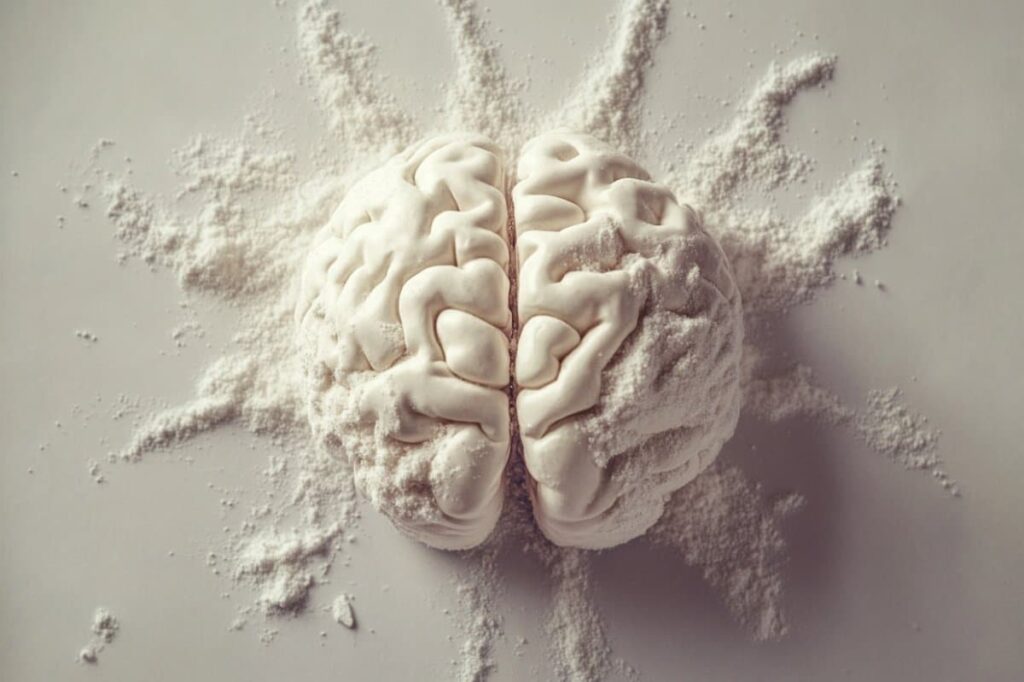
In a groundbreaking study, researchers at the University of Utah have engineered fruit flies that voluntarily consume cocaine, creating the first fly model for cocaine addiction. Typically, flies avoid the drug due to its bitter taste, but by disabling their bitter-sensing receptors, scientists encouraged addictive behavior within just 16 hours of exposure. This model represents a significant advancement in rapidly testing the genetic and neurological mechanisms behind cocaine use disorder.
Because fruit flies share many addiction-related genes with humans, this research could greatly accelerate the discovery of effective treatments. The development is particularly timely, given the growing concern over cocaine use disorder, which affects approximately 1.5 million people in the United States alone.
Engineering Addiction in Flies
For the first time, researchers have created genetically modified fruit flies that can become addicted to cocaine. The flies will self-administer cocaine if given the option, mimicking addictive behavior observed in humans. The dosage was crucial—flies would only voluntarily consume cocaine at low concentrations—but they developed a preference remarkably quickly, within 16 hours of first exposure.
The new model could prove immensely valuable for the development of new therapies to prevent and treat cocaine use disorder. Heredity strongly impacts the risk of developing cocaine use disorder, but the large number of genes implicated in addiction risk has made it difficult to determine which might be the best targets for therapeutics.
Understanding the Bitter Barrier
Flies and humans react to cocaine in remarkably similar ways, says Adrian Rothenfluh, PhD, associate professor of psychiatry at the University of Utah and the senior author of the study. “At low doses, they start running around, just like people,” Rothenfluh explains. “At very high doses, they get incapacitated, which is also true in people.”
However, there is a significant difference between flies and humans: flies do not like cocaine due to its bitter taste. Travis Philyaw, PhD, first author on the paper, suspected that the answer might lie in the flies’ sense of taste. “Insects are evolutionarily primed to avoid plant toxins, and cocaine is a plant toxin,” says Philyaw. By muting the activity of bitter-sensing nerves, the researchers enabled the flies to develop a preference for cocaine-laced sugar water.
Implications for Human Addiction Research
The researchers believe that this model will help them understand addiction in humans. Now that scientists can study the process in fruit flies, the pipeline to new discoveries can be greatly accelerated. “We can scale research so quickly in flies,” Philyaw notes. “We can identify risk genes that might be difficult to uncover in more complex organisms, and then we pass that information to researchers who work with mammalian models.”
Rothenfluh agrees: “We can really start to understand the mechanisms of cocaine choice, and the more you understand about the mechanism, the more you have a chance to find a therapeutic that might act on that mechanism.”
From Basic Science to Breakthroughs
Beyond specific searches for therapeutics, Rothenfluh emphasizes the broader impacts of basic research into the mechanisms of how the human mind—and the fruit fly mind—work. “Just trying to understand the simple little fly brain can give us insights that you cannot anticipate,” he says. “Basic science is important, and you never know what exciting things you might find that turn out to be impactful for understanding the human condition.”
This research, published in the Journal of Neuroscience, is titled “Bitter sensing protects Drosophila from developing experience-dependent cocaine consumption preference.” The work was funded by the Huntsman Mental Health Institute, the University of Utah Molecular Medicine Program, and the National Institutes of Health.
“Bitter sensing protects Drosophila from developing experience-dependent cocaine consumption preference” by Adrian Rothenfluh et al. Journal of Neuroscience
The study underscores the potential of using simple organisms like fruit flies to unravel the complexities of addiction, offering hope for new treatments in the future.







